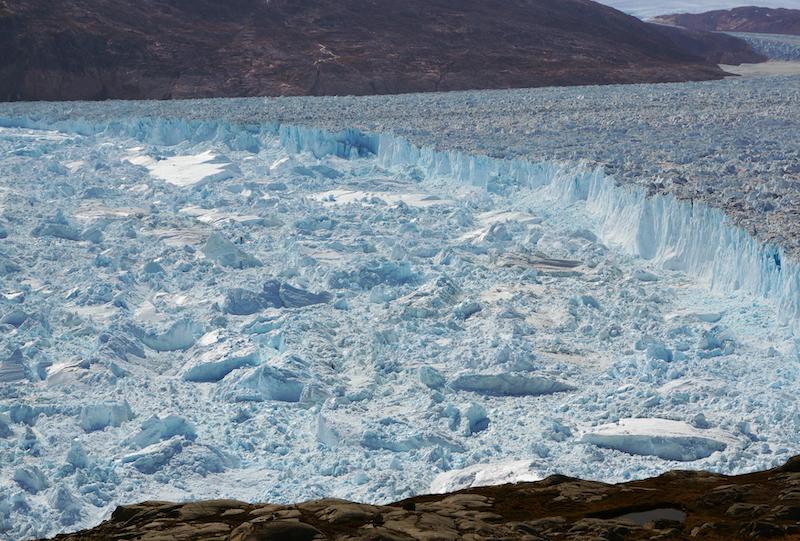A new paper published within Nature on May 5, 2021 and titled “The Paris Climate Agreement and future sea-level rise from Antarctica” raises some considerable concerns.
The abstract lays it all out in rather blunt terms.
The Abstract
The Paris Agreement aims to limit global mean warming in the twenty-first century to less than 2 degrees Celsius above preindustrial levels, and to promote further efforts to limit warming to 1.5 degrees Celsius1. The amount of greenhouse gas emissions in coming decades will be consequential for global mean sea level (GMSL) on century and longer timescales through a combination of ocean thermal expansion and loss of land ice2. The Antarctic Ice Sheet (AIS) is Earth’s largest land ice reservoir (equivalent to 57.9 metres of GMSL)3, and its ice loss is accelerating4. Extensive regions of the AIS are grounded below sea level and susceptible to dynamical instabilities5,6,7,8 that are capable of producing very rapid retreat8. Yet the potential for the implementation of the Paris Agreement temperature targets to slow or stop the onset of these instabilities has not been directly tested with physics-based models.
Here we use an observationally calibrated ice sheet–shelf model to show that with global warming limited to 2 degrees Celsius or less, Antarctic ice loss will continue at a pace similar to today’s throughout the twenty-first century. However, scenarios more consistent with current policies (allowing 3 degrees Celsius of warming) give an abrupt jump in the pace of Antarctic ice loss after around 2060, contributing about 0.5 centimetres GMSL rise per year by 2100—an order of magnitude faster than today4. More fossil-fuel-intensive scenarios9 result in even greater acceleration. Ice-sheet retreat initiated by the thinning and loss of buttressing ice shelves continues for centuries, regardless of bedrock and sea-level feedback mechanisms10,11,12 or geoengineered carbon dioxide reduction.
These results demonstrate the possibility that rapid and unstoppable sea-level rise from Antarctica will be triggered if Paris Agreement targets are exceeded.
Further Insights
The world is currently on track to exceed three degrees Celsius of global warming, and new research led by the University of Massachusetts Amherst’s Rob DeConto, co-director of the School of Earth & Sustainability, shows that such a scenario would drastically accelerate the pace of sea-level rise by 2100. If the rate of global warming continues on its current trajectory, we will reach a tipping point by 2060, past which these consequences would be “irreversible on multi-century timescales.”
The new paper, published today in Nature, models the impact of several different warming scenarios on the Antarctic Ice Sheet, including the Paris Agreement target of two degrees Celsius of warming, an aspirational 1.5 degree scenario, and our current course which, if not altered, will yield three or more degrees of warming. If the more optimistic 1.5 and 2 degree Paris Agreement temperature targets are achieved, the Antarctic Ice Sheet would contribute between 6 and 11 centimeters of sea level rise by 2100. But if the current course toward 3 degrees is maintained, the model points to a major jump in melting. Unless ambitious action to rein in warming begins by 2060, no human intervention, including geoengineering, would be able to stop 17 to 21 centimeters of sea-level rise from Antarctic ice melt alone by 2100. The implications of exceeding Paris Agreement warming targets become even more stark on longer timescales. Antarctica contributes about 1 meter of sea level rise by 2300 if warming is limited to 2 degrees or less, but reaches globally catastrophic levels of 10 meters or more under a more extreme warming scenario with no mitigation of greenhouse-gas emissions.
DeConto and colleagues’ research shows the very architecture of the Antarctic Ice Sheet itself plays a key role in ice loss. Ice flows slowly downhill, and the Antarctic Ice Sheet naturally creeps into the ocean, where it begins to melt. What keeps that ocean-bound ice flowing slowly is a ring of buttressing ice shelves, which float in the ocean but hold back the upstream glacial ice by scraping on shallow sea-floor features. Those buttressing ice shelves act both as dams that keep the sheet from sliding rapidly into the ocean, and as supports that keep the edges of the ice sheet from collapsing.
But as warming increases, the ice shelves thin and become more fragile. Meltwater on their surfaces can deepen crevasses and cause them to disintegrate entirely. This not only lets the ice sheet flow toward the warming ocean more quickly, it allows the exposed edges of the ice sheet to break off or “calve” into the ocean, adding to sea level rises. These processes of melting and ice shelf loss, followed by faster glacial flow and rapid calving are seen on Greenland today, but they haven’t become widespread on the colder Antarctic ice sheet — at least not yet. DeConto points out that “if the world continues to warm, the huge glaciers on Antarctica might begin behaving like their smaller counterparts on Greenland, which would be disastrous in terms of sea level rise.” The authors of the study, which was supported by funding from the National Science Foundation and the NASA Sea Level Change Science Team, write that missing Paris Agreement temperature targets and allowing extensive loss of the buttressing ice shelves “represents a possible tipping point in Antarctica’s future.”
One last thought
Yes, we should indeed be worried.
Doing nothing except business as usual is really not a viable long-term option.
